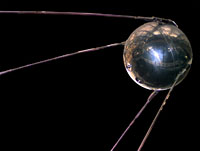1680


Wikimedia Public Domain Image
July 5, 1687
Publication of Principia
The English astronomer Sir Isaac Newton publishes the Philosophae Naturalis Principia Mathematica. This three-volume work outlines Newton's three laws of motion as well as his law of universal gravitation and a derivation of Kepler's laws for the motion of the planets. The Principia is considered by many to be one of the most important scientific works ever written.
1810

1813
First Exposition of Rocket Mechanics
The British mathematician William Moore publishes Treatise on the Motion of Rockets. This work features the first exposition of rocket mechanics based on Newton's third law of motion.
1900

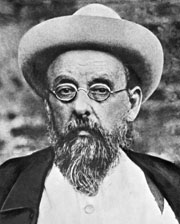
Wikimedia Public Domain Image
1903
Exploration of Cosmic Space
Russian rocket scientist Konstantin Tsiolkovsky publishes The Exploration of Cosmic Space by Means of Reaction Devices. It suggests the use of reaction vehicles for interplanetary flight. This is the first serious work to be published that shows space exploration to be theoretically possible. It establishes Tsiolkovsky's reputation as the father of space flight theory.
1910

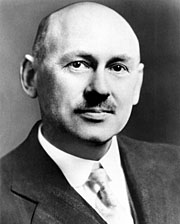
Wikimedia Public Domain Image
1914
Goddard's Rocket Patents
U.S. rocket scientist Robert H. Goddard receives two landmark patents for rockets. The first describes a multi-stage rocket and the second describes a rocket fueled with gasoline and liquid nitrous oxide. These two patents would become major milestones in the history of rocketry.

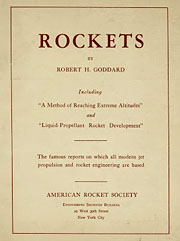
Public Domain Image
1919
Goddard's Famous Publication
Robert Goddard publishes A Method of Reaching Extreme Altitudes. The book describes Goddard's mathematical theories of rocket flight and his research into solid-fuel and liquid-fuel rockets. It is regarded by many as one of the most important works in the science of rocketry and is believed to have influenced the work of German rocket pioneers Hermann Oberth and Wernher von Braun.
1920

May, 1924
Soviet Rocket Society Established
The Soviet Union establishes the Society for Studies of Interplanetary Travel. This group would soon be renamed the Society for the Study of Interplanetary Communications and would become the first Soviet rocket society.

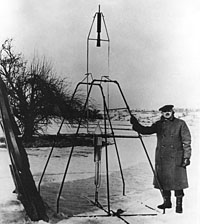
Wikimedia Public Domain Image
March 16, 1926
First Liquid Fueled Rocket Launched
U.S. rocket scientist Robert H. Goddard launches the first liquid fueled rocket from his Aunt Effie's farm in Auburn, Massachusetts. The 4-foot high rocket dubbed "Nell" reaches an altitude of 41 feet and a speed of about 60 miles per hour. The flight lasts only 2 1/2 seconds, but paves the way for the U.S. rocket program.

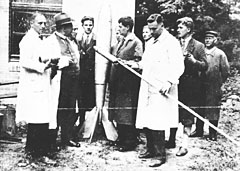
Public Domain Image
1927
Rocket Club
The Verein für Raumschiffahrt (Society for Space Travel) is formed as an association of amateur rocket enthusiasts in Germany prior to Word War II that includes members outside Germany. This group brings together many of the scientists and engineers who would eventually make important contributions to space flight. The group's first successful test firing with liquid fuel is performed by Max Valier at the Heylandt Works on January 25, 1930. Additional rocket experiments are conducted at a farm near Bernstadt, Saxony.
1930

1933
Aggregate Rocket Series
Work begins in Germany on the Aggregate series of rockets. Under the direction of German rocket scientist Wernher von Braun, this program eventually leads to development of the V-2 rocket, one of Nazi Germany's most powerful weapons of destruction.
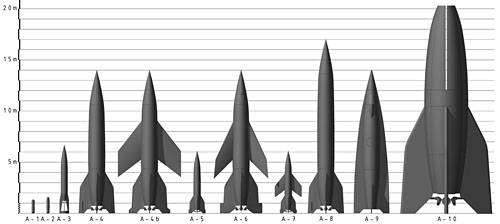
Spike78 / CC BY-SA 4.0
1940

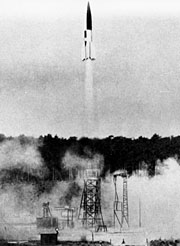
Bundesarchiv, Bild 141-1880
CC-BY-SA 3.0
October 3, 1942
First Suborbital Flight
After two previous failures, Germany successfully launches their V-2 rocket. It is the first man-made object to achieve sub-orbital spaceflight, reaching an altitude of 62 miles (100 kilometers). The V-2 is the progenitor of all modern rockets including the U.S. Apollo program's Saturn V moon rocket. Is is powered by a liquid propellant rocket engine and is used to attack allies cities during World War II.

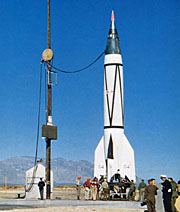
Wikimedia Public Domain Image
May 10, 1946
First U.S. High Altitude Flight
The U.S. military achieves its first high-altitude space flight using a captured and rebuilt German V-2 rocket. Launched from the White Sands Proving Ground in New Mexico, the test flight reaches an altitude of 70.9 miles (114.1 kilometers) and travels 31 miles (49.9 kilometers) down range from the launch site.

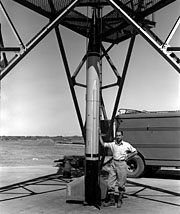
Wikimedia Public Domain Image
May 22, 1946
First American-Designed Rocket Reaches Space
The United States launches its first American-designed rocket. Known as the Wac Corporal, the rocket reaches the edge of space at an altitude of 50 miles (80.5 kilometers) after being launched from the White Sands Proving Ground in New Mexico.

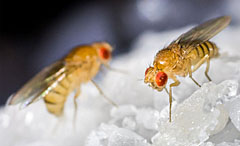
Francisco Romero Ferrero / CC BY-SA
February 20, 1947
First Animals in Space
Fruit flies become the first animals in space as a V-2 rocket is launched from the White Sands Proving Ground. Inside are several vials containing fruit flies, rye seeds, and cotton seeds. The flight reaches an altitude of 60 miles (96.6 kilometers), and the payload is later retrieved intact.
1957

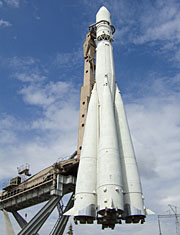
Sergei Arssenev / CC BY-SA
August 21, 1957
First Intercontinental Ballistic Missile
The Soviet Union launches the first Intercontinental Ballistic Missile (ICBM). Known as the R-7 Semyorka, it is 112 feet (34 meters) long and weight 280 metric tons. It travels a total distance of 3,728 miles (6,000 km) on its first flight. A modified version of this missile would be used later to launch the world's first artificial satellite, Sputnik 1.

October 4, 1957
First Artificial Satellite
The Soviet Union beats the United States into space by launching Sputnik 1. At only 184 pounds, it is the world's first artificial satellite. This basketball-sized object circles the planet once every hour and 36 minutes as it transmits radio signals back to Earth. All though its mission ends after only 22 days, it is considered to be a major accomplishment.

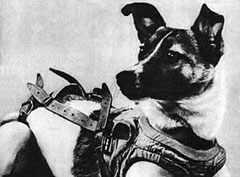
Wikimedia Public Domain Image
November 3, 1957
First Live Animal in Space
Following the success of Sputnik 1, the Soviets launch Sputnik 2 on November 3, 1957. This spacecraft contains a pressurized container that houses a dog named Laika. The capsule has a controlled atmosphere, food supply, waste collection system and biological sensors. Laika lives for 8 days until the food supply runs out, and proves that animals can survive in space.
1958

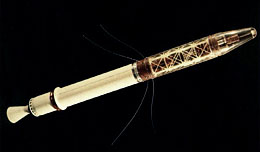
Wikimedia Public Domain Image
January 31, 1958
First American Satellite
America launches its first artificial satellite. Weighing only 30 pounds, Explorer 1 is launched into orbit by the Army on a Jupiter-C rocket. The satellite is twice the size of a basketball and contains several scientific instruments. This mission discovers the radiation belts surrounding the Earth.

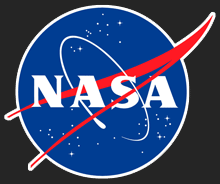
October 1, 1958
NASA is Born
The National Aeronautics and Space Administration (NASA) is founded, taking over the responsibilities of the existing National Advisory Committee on Aeronautics.
1959

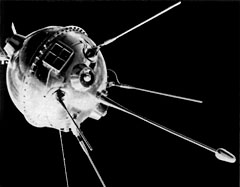
NASA/JPL Public Domain Image
January 2, 1959
First Spacecraft to Achieve Solar Orbit
The Russian satellite Luna 1 is launched in an attempt to hit the Moon. But due to an incorrectly timed upper stage burn during its launch, it misses the Moon and is flung out into space by the Moon's gravity. By sheer accident it becomes the first man-made object to achieve an orbit around the Sun. It is later dubbed "Artificial Planet 1" and renamed Mechta (Dream). Luna 1 has also been referred to as the "First Cosmic Ship", in reference to its achievement of Earth escape velocity.

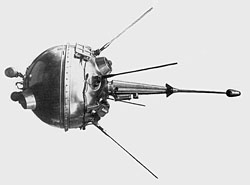
CC BY-SA NASA, Patrick Pelletier
September 12, 1959
First Spacecraft to Impact on the Moon
The Russian satellite Luna 2 is launched. On September 13, it becomes the first man-made object to hit the Moon. The spacecraft was sterilized to avoid the possibility of contaminating the Moon with terrestrial bacteria. On September 13, 1959, it impacted the Moon's surface east of Mare Imbrium near the craters Aristides, Archimedes, and Autolycus. It was the first spacecraft to reach the surface of the Moon.

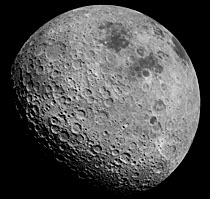
NASA Public Domain Image
October 4, 1959
First View of Moon's Far Side
The Russian satellite Luna 3 is launched, orbiting the Moon and photographing 70 percent of the Moon's far side. This is mankind's first view of the far side of the Moon, which always faces away from the earth due to the fact that the Moon is tidally locked to our planet.
1960

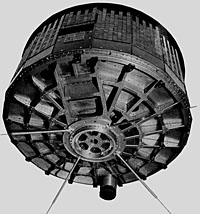
Wikimedia Public Domain Image
April 1, 1960
First Weather Satellite
Tiros 1, the first successful weather satellite, is launched by the United States. Two television cameras in the satellite return views of clouds above the Earth. Tiros 1 is only operational for 78 days, but proves that satellites can be useful tools for surveying weather conditions from space.





